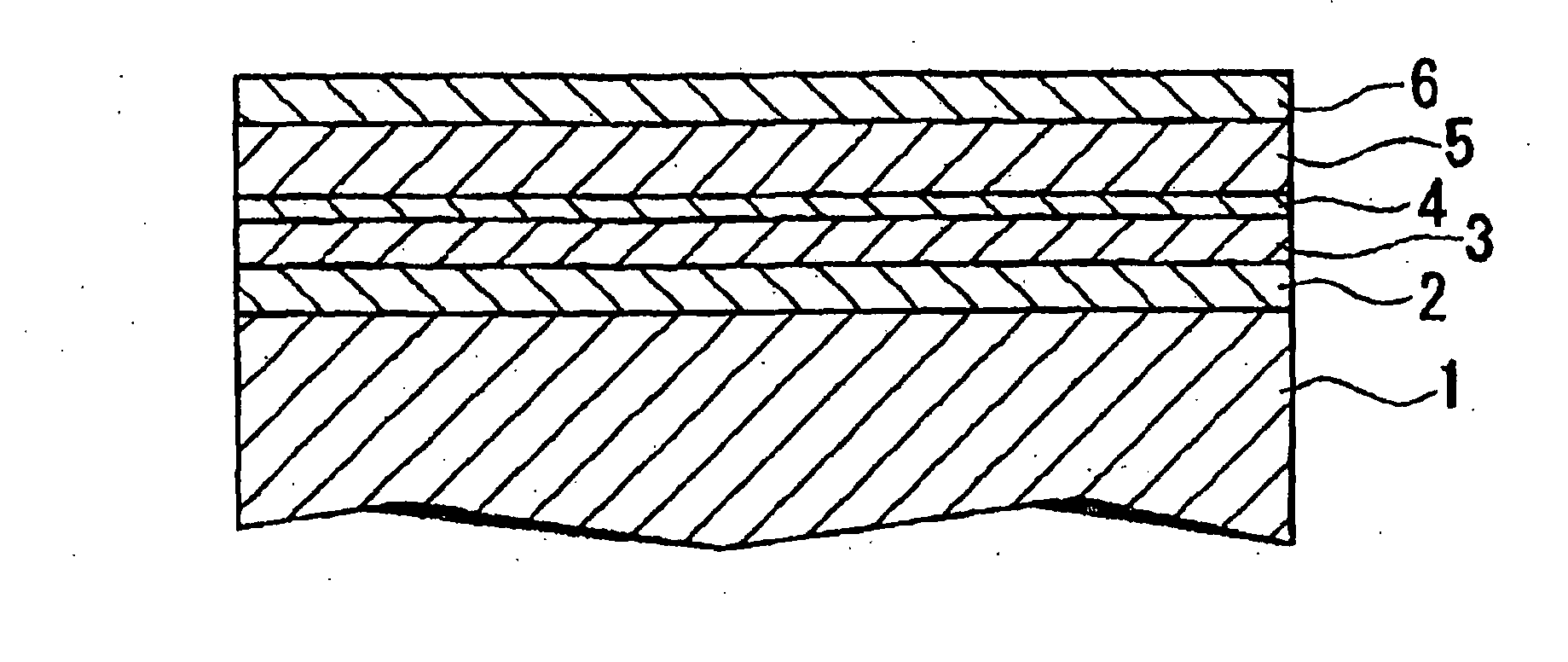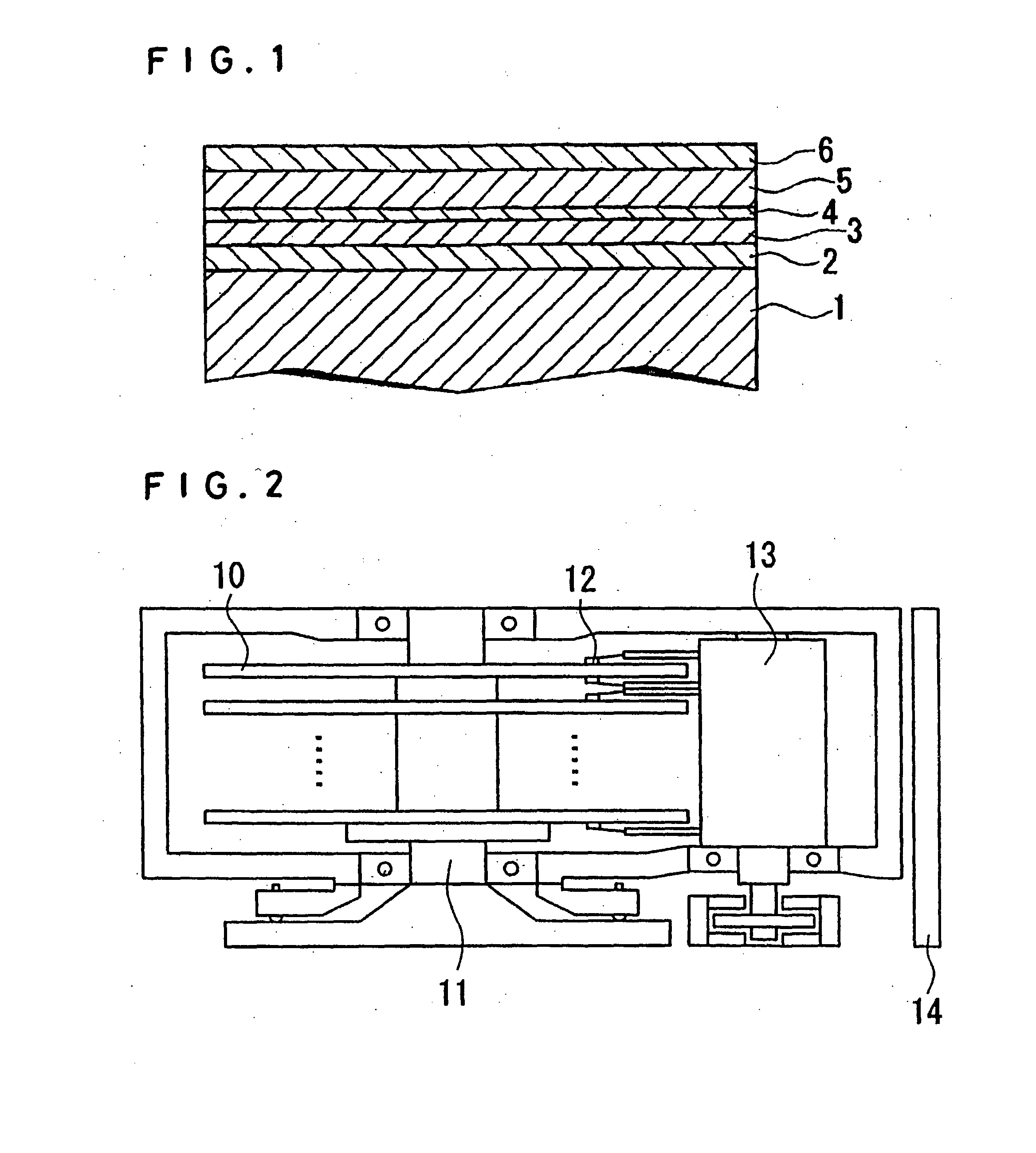Magnetic Recording Medium, Method For Production Thereof And Magnetic Recording And Reproducing Device Using The Medium
- Summary
- Abstract
- Description
- Claims
- Application Information
AI Technical Summary
Benefits of technology
Problems solved by technology
Method used
Image
Examples
example 1
[0065] A cleaned silicon substrate (20 mm in diameter) was placed in a film-forming chamber of a DC magnetron sputtering device (made by Anelva Co. and sold under a product code of “C-3010”). The interior of the film-forming chamber was evacuated till the degree of vacuum reached 1×10−5 Pa. Then, 50 nm of 89Co-4Zr-7Nb (Co content 89 at %, Zr content 4 at %, and Nb content 7 at %), 0.8 nm of Ru and 50 nm of 89Co-4Zr-7Nb were placed on this silicon substrate and treated to form a soft magnetic film. Subsequently, 20 nm of Ru was made to form an orientation controlling film and 12 nm of 66Co-8Cr-18Pt-8SiO2 was made to form a perpendicular magnetic recording film. In this while, the substrate was not heated at all.
[0066] Next, a protective film (DLC) of an amount of 4 nm was formed by the CVD method.
[0067] Then, a lubricating film of perfluoropolyether was formed by the dipping method to complete a magnetic recording medium.
example 2
COMAPARATIVE EXAMPLE 2
[0069] A magnetic recording medium was manufactured by following the procedure of Example 1 while forming the protective film (non-DLC film) by the sputtering method instead.
[0070] The magnetic recording media obtained in the preceding example and comparative examples were rated for the recording and reproducing property and the reliability. The recording and reproducing property was rated using a read-write analyzer (made by GUZIK Corp. of the U.S. and sold under a product code of “RWA1632”) and a spin stand S1701MP.
[0071] The recording and reproducing property was rated using a head adapted to effect writing with a single magnetic pole and effect reproduction with a GMR element under the conditions of recording frequency having the signal (TAAo-p) set at a linear recording density of 120 kFCI and the noise set at a linear recording density of 720 kFCI. The SNR was calculated in accordance with the following formula.
SNR=20×log(TAAo−p / Noise)
[0072] The relia...
PUM
 Login to View More
Login to View More Abstract
Description
Claims
Application Information
 Login to View More
Login to View More - R&D
- Intellectual Property
- Life Sciences
- Materials
- Tech Scout
- Unparalleled Data Quality
- Higher Quality Content
- 60% Fewer Hallucinations
Browse by: Latest US Patents, China's latest patents, Technical Efficacy Thesaurus, Application Domain, Technology Topic, Popular Technical Reports.
© 2025 PatSnap. All rights reserved.Legal|Privacy policy|Modern Slavery Act Transparency Statement|Sitemap|About US| Contact US: help@patsnap.com


